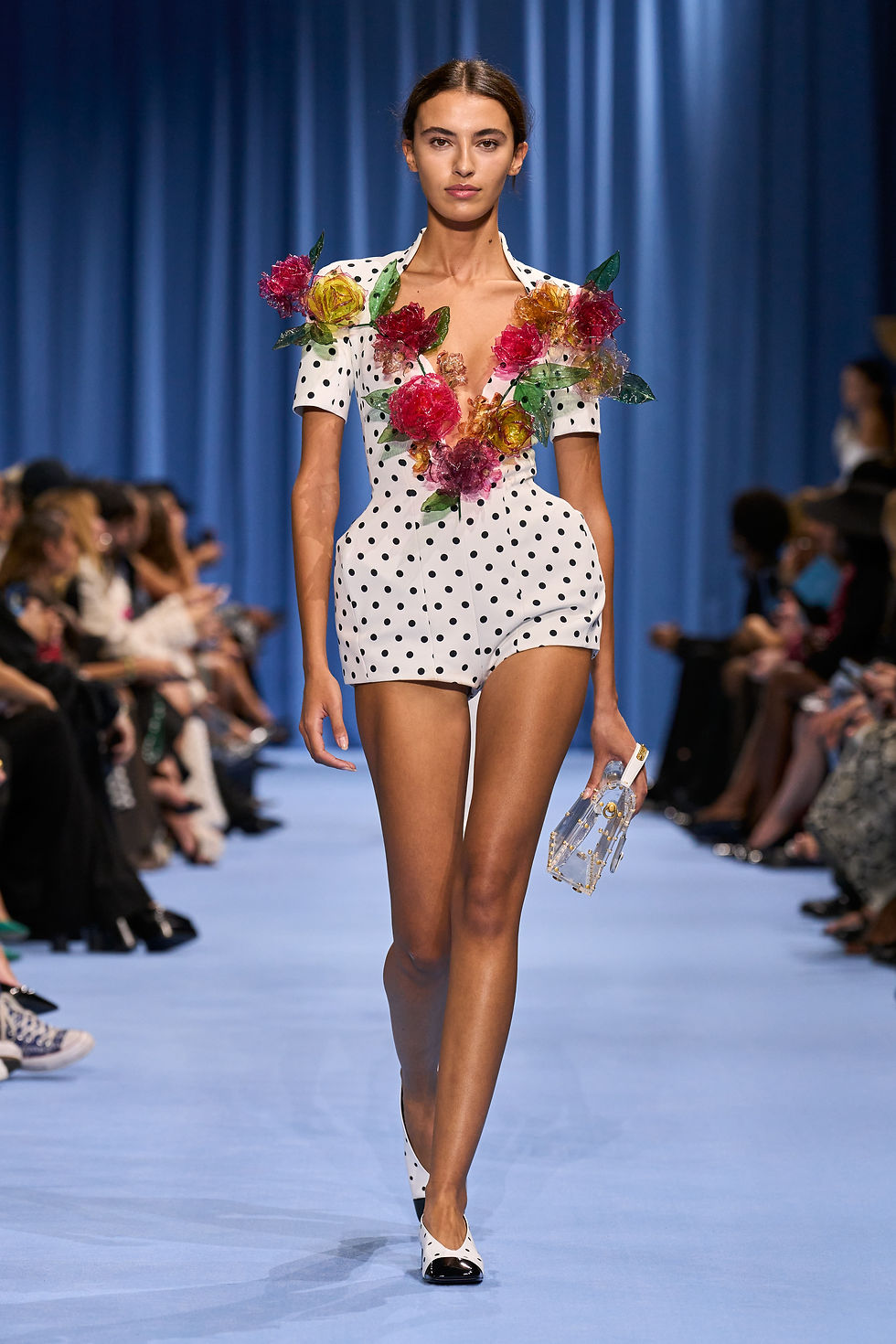A Celebration of Excess Over Simplicity: Maximalist vs Minimalist Trends in 2024
- Adam Khalil
- May 17, 2024
- 2 min read
The days of “fashion no-no’s” are now over

Closely examining fashion history enables insight on the cyclicality of periods of excess and restraint. Several schools of thought in fashion design have revered minimalist and maximalist trend cycles to embellish an artist's journey in their individual styles and arrangements. That being said, as we enter the Spring 2024 season, we can easily discern boldness on the runway as we experience yet another maximalism resurgence.
Maximalism and minimalism, although both distinctly different in nature, seek to challenge understanding through mediums of cultural expression and are strongly tied to their specific time period. As each impression differs in design and style choice, they similarly accentuate one another as they adapt to new eras with their cultural, economic, and technological changes.
Minimalism, for example, is primarily characterized by simplicity and functionality. Its focus is investing in quality pieces that provide longevity and foundational components that supplement an outfit. Minimalist fashion prioritizes reduction and subtly “subtracts,” utilizing clean lines and silhouettes to accentuate the relationship between the body and the garment. Through this, it highlights restraint in a “less-is-more” fashion. The idea is to stimulate the audience's interest through manipulated pattern-making and construction rather than outright embellishment.
Conversely, maximalism revels in the excess and is closely associated with extravagance and a non-functional style. The idea of maximalism is characterized primarily through unabashed self-expression through bright prints, mixing and matching eclectic variations, and a “more-is-more” approach.

In the context of early 2024, a paradigm shift in design appeals has begun. People are moving away from the limitations of a timeless and clean minimalist look and now seek the extraordinary and bizarre. Eccentricity is now in vogue as runways become engulfed with clashing colorful displays, asymmetrical patterns and shapes, and an adornment of diverse blends with hopes of being different from the mix. This trend is not only subject to major fashion brands as “clutter core” is now trending on various social media fashion forums. The above-mentioned craze now sweeping the internet involves intentional layering, pattern-making, and unique hair and makeup. It highlights the importance of pushing past boundaries set in the fashion world and creating new ones of your own. The idea is to indulge in whatever meets one's eye through dramatic accessories, an abundance of color or themes, and contradicting textures.
Maximalism allows people to celebrate change and diversity, exemplifying self-expression and empowerment through bravery of the ostentatious. The days of “fashion no-no’s” are now over as a renewed focus on the wearer’s distinctiveness takes over.

As shown, the model dons a matching polka-dotted shoe and one-piece jumper combo, illustrating uniformity for the base of the outfit. The front is then intricately adorned with bright and colorful thin-layered flowers that spread across each of the shoulders to the midriff of the top.

The models for the Dior Men’s Spring 2023 show accentuate activewear elements with formal undertones, highlighting contrasting styles and mediums of functionality in fashion that focus their attention on one another.

Illustrated above is an example of maximalist accessories put into practice, with excessive layering and distinctive chunky jewelry that uplifts the entire outfit. Although “stand-alone” and well over-excessive, each piece is intricately placed with thorough intention.
Adam Khalil is a blog writer for Revolution. This article was edited by Meliha Ural.




Comments